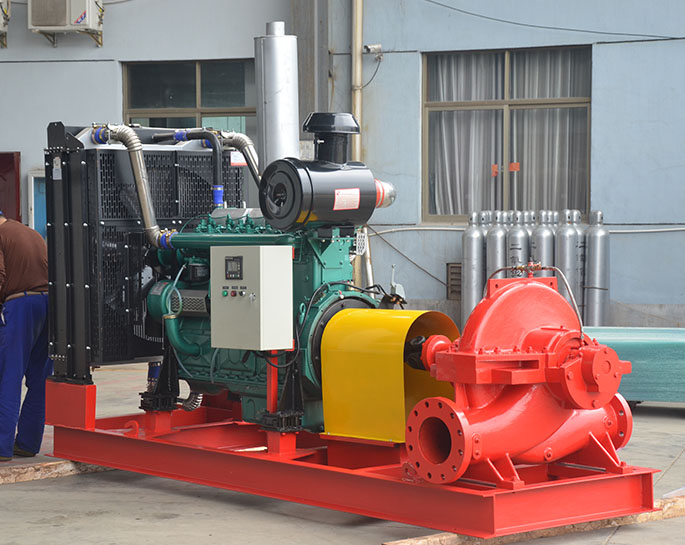When is the fire pump primed?
A fire pump needs to be primed when it is not able to draw water from a water source effectively due to air in the suction piping or if the water source is located above the pump's centerline. Priming involves filling the pump and its suction piping with water to eliminate air and ensure proper water flow into the pump. This is essential for the pump to operate efficiently and effectively during firefighting or emergency situations.
Here are two common scenarios when a fire pump needs to be primed:
-
Air in the Suction Piping: If there is air trapped in the suction piping of the fire pump, it can create a blockage that prevents water from flowing into the pump properly. This can happen during maintenance, system startup, or if there's a leak in the piping that allows air to enter. To resolve this, the pump needs to be primed to push out the air and replace it with water.
-
Suction Lift Situations: When the water source is located above the pump's centerline or at a higher elevation, the pump needs to overcome gravity to draw water into the system. In such cases, the pump might struggle to pull water effectively due to the suction lift. Priming is necessary to help establish a water column in the suction line, making it easier for the pump to draw water against gravity.
Priming a fire pump involves the following steps:
-
Isolate the Pump: Ensure that the pump is disconnected from the power source and any associated systems.
-
Open Valves: Open the relevant valves on the suction and discharge lines. Make sure the discharge valve is closed to prevent water from flowing out during priming.
-
Fill the Pump: Depending on the pump's design, you might need to manually fill the pump casing and suction piping with water until the air is expelled. Some pumps have built-in priming mechanisms that facilitate this process.
-
Close Valves: Once the air is removed and the pump and piping are filled with water, close the valves on the suction and discharge lines.
-
Start the Pump: After the pump is primed, start it in accordance with the manufacturer's instructions. The pump should now be able to draw water effectively from the source and deliver it through the discharge line.
Priming ensures that the pump can function optimally by preventing cavitation (formation of vapor bubbles) and maintaining a steady flow of water. Fire pumps are critical for firefighting systems, so it's important to ensure they are properly primed and operational. Always refer to the pump manufacturer's guidelines and consult with professionals when in doubt about priming procedures.







